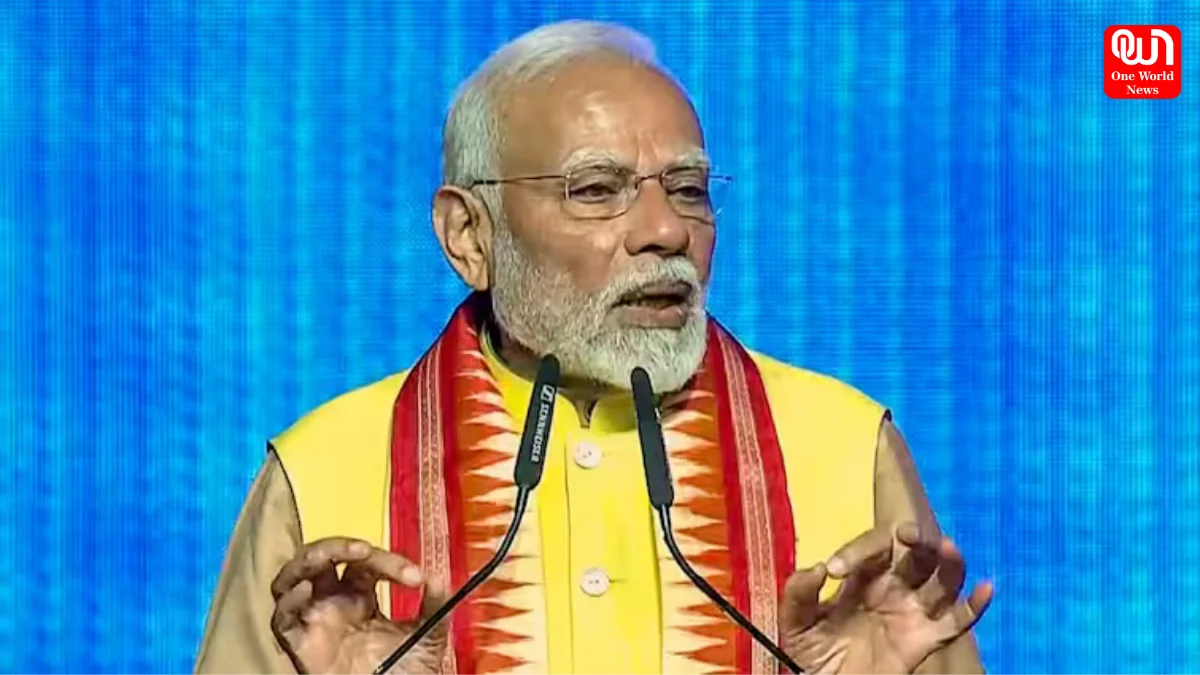PM Modi states ‘Hindu rate of growth… blemished Hindus’: What did he mean?
The phrase “Hindu rate of growth” is credited to economist Raj Krishna and was used to highlight the 3.5% growth rate in India during the Nehru era, which was nearly equivalent to the nation’s population growth rate.
PM Modi calls out Congress for past economic rhetoric
In his response to the debate regarding the Motion of Thanks to the President’s Address in the Rajya Sabha on Thursday, Prime Minister Narendra Modi criticized previous Congress administrations, stating: “Due to the Congress’s misguided policies, the self-image of Hindus was damaged as the slow GDP growth was labeled the ‘Hindu rate of growth.’”
The BJP had mentioned this previously as well, and in December 2023, party MP Sudhanshu Trivedi introduced the term “the Hindutva rate of GDP growth” in contrast to the “Hindu rate of growth.”
“Once, India’s economy was the subject of ridicule.” It was often said that (India) could not expand beyond 2%. This was formerly referred to as the Hindu growth rate. This is how we were ridiculed. “However, since we assumed power, now the GDP growth rate is 7.8% because those in authority currently believe in Hindutva,” Trivedi stated.
What does the term Hindu rate of growth refer to?
The phrase, created by economist Raj Krishna, has been utilized since 1982. Krishna, characterized as “somewhat of a right-winger,” did not share the ideologies of the Congress-led administrations of that era.
During the Emergency, Krishna was an instructor at the Delhi School of Economics. Following the removal of the Indira Gandhi administration in 1977, he was appointed to the Planning Commission under the Janata Party leadership. Throughout his time in office, the Commission developed the preliminary version of the Sixth Five Year Plan. At the same time, he served as a member of the Seventh Finance Commission, which was in charge of allocating funds to the states.
In 1979, he returned to teach at the Delhi School and remained there until his passing in 1985. As stated in The New Oxford Companion to Economics in India (OUP), it was “in this era that he introduced the notable term ‘The Hindu Rate of Growth’, a controversial tool meant to highlight the scant 3.5% growth rate encountered by India then. The consistent nature of this growth rate amidst shifts in governments, conflicts, famines, and other crises led him to view it as a fundamentally cultural phenomenon- thus the name.
In an article named ‘The recovery of India: Economic growth in the Nehru era’, ex-Ashoka University economics professor Pulapre Balakrishnan offered context and insight into India’s growth performance during that period, from 1951 to 1964.
He noted that India’s GDP and GDP per capita growth rates increased from 0.9% and 0.1%, respectively, during 1900 to 1946 (the colonial period) to 4.1% and 1.9%, respectively, from 1950 to 1964. Additionally, India’s GDP growth rate of 4.1% in the Nehru era surpassed China’s 2.9% during the same timeframe, along with being greater than the GDP growth rates of the United States (3.6%), the United Kingdom (1.9%), and Japan (2.8%) from 1820 to 1992.
It is now feasible to contextualize Raj Krishna’s lament that the growth record of independent India until the late 1970s ranked it below 100 economies globally. Krishna utilized per capita GDP as his metric. “This effectively conceals the extent of advancement achieved during the Nehru period,” noted Balakrishnan.
When did India surpass the ‘Hindu rate of growth’?
At a first look, it might seem that India’s growth narrative took a positive turn following the 1991 reforms. However, the GDP growth rate information indicates that India Began to grow at a pace exceeding the Hindu rate of 3.5% significantly sooner.
In an article featured in the Economic and Political Weekly in 2006, the late Baldev Raj Nayar, Professor Emeritus at McGill University in Canada, contended that although it is undoubtedly the case that liberalisation boosts economic growth, “it is also equally true of the intra-system economic policy reforms of the 1980s.”
For example, Nayar’s calculations indicate that India’s average yearly GDP growth rate from 1956 to 1975 was 3.4%- nearly the same as the Hindu rate of growth. Nonetheless, from 1981 to 1991- a complete ten years prior to the crisis and reforms- India’s growth rate averaged 5.8%.
For numerous economists, including Arvind Virmani and Arvind Panagariya, 1980 (or the 1980s in general) is seen as the pivotal year due to the reforms launched by the administrations of Indira Gandhi (who returned to leadership after facing criticism for implementing Emergency) and Rajiv Gandhi.
However, Nayar emphasizes that the initial stage of economic liberalization began in 1975- the year when the Emergency was implemented. To support his assertion, he highlights that the GDP growth rate from 1976 to 2006 averaged 5.6%- significantly exceeding the Hindu rate of growth.
What does the term ‘Hindutva growth rate’ refer to?
The “7.8%” that Trivedi described as the Hindutva growth rate pertains to the average GDP growth rate following Covid, though it includes a significantly important adjustment.
Although it is factually accurate that India’s average yearly GDP growth rate for the years 2021-22, 2022-23, and 2023-24 is 7.8%, this figure conveniently overlooks the methodology behind calculating growth rates. Indeed, upon examining the data carefully, it becomes evident that the Hindutva rate resembles the Hindu rate of growth.
The significantly high growth rates in the years following Covid are a direct consequence of the economic downturn experienced during the Covid year.
India’s GDP declined by nearly 6% in 2020-21, and this low benchmark led to a perception of rapid GDP growth in the following years. For example, although India’s highest GDP growth over the last three years occurred in 2021-22 — with GDP increasing by over 9% — its actual GDP (in absolute terms) was only 3% greater than its pre-Covid level.
In simpler terms, the GDP increased by an overall 3% compared to the pre-Covid levels in the following two years. Therefore, the only logical method to determine the GDP growth rate would be to also consider the decline during Covid when assessing the Hindutva rate.
We’re now on WhatsApp. Click to join.
Like this post?
Register at One World News to never miss out on videos, celeb interviews, and best reads.








